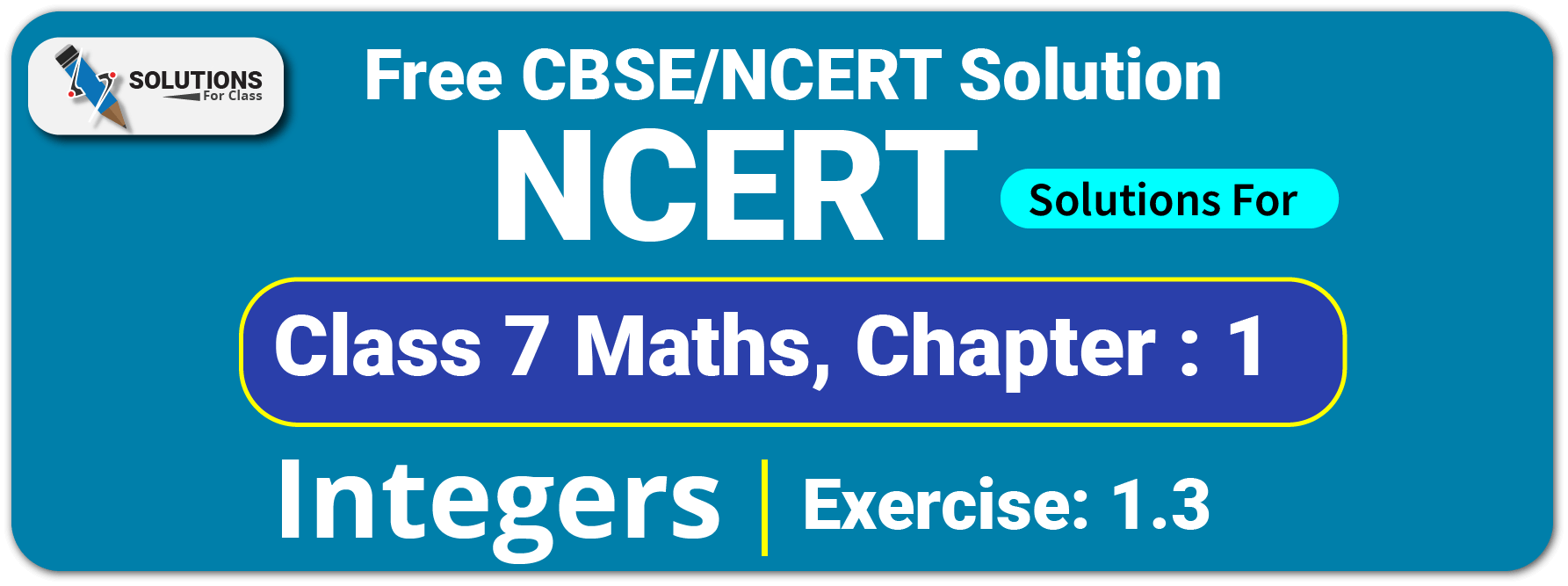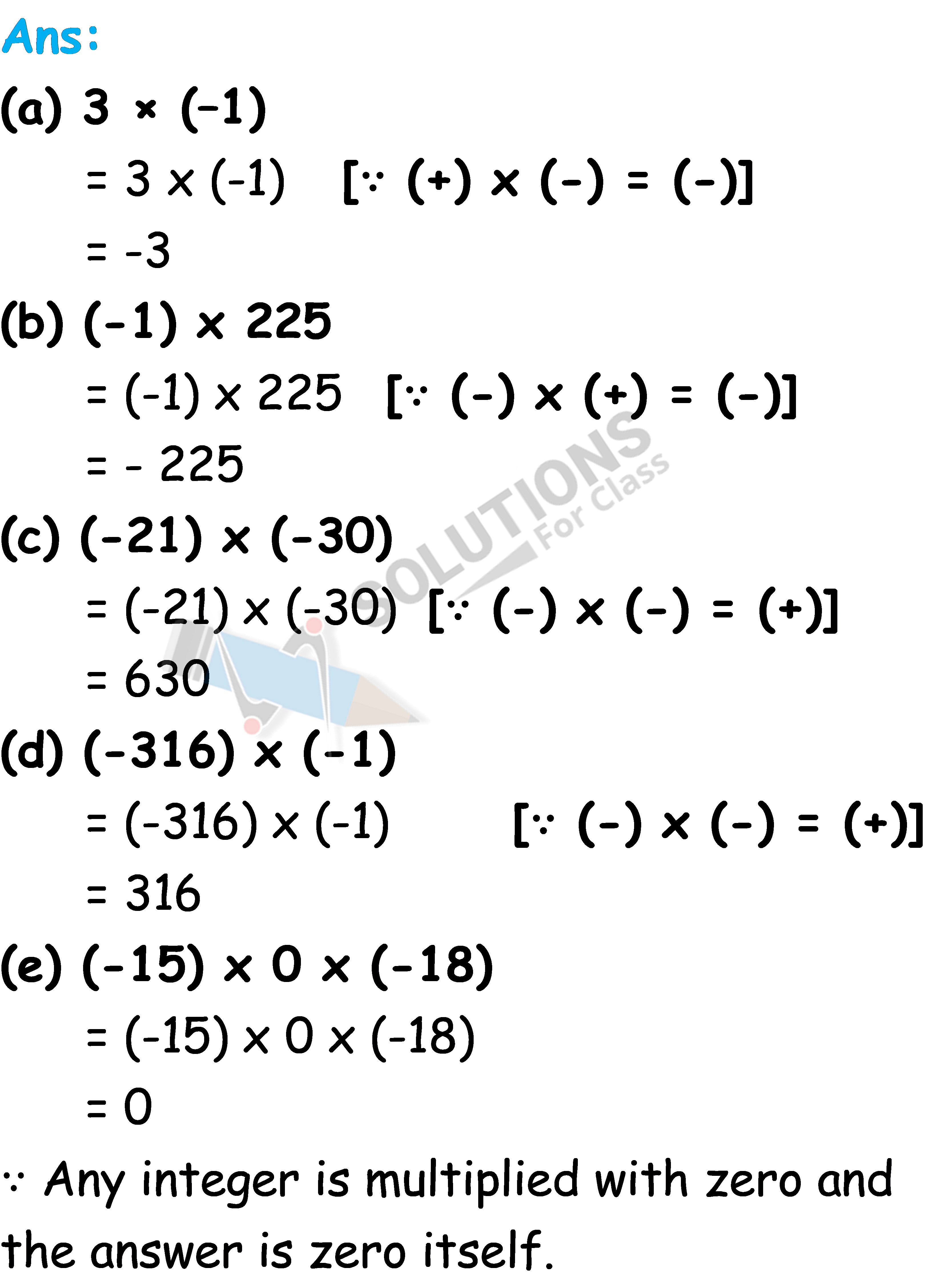
Table of Contents
ToggleClass 7, Maths, Chapter 1, Exercise 1.3 Solutions
Q.1. Find each of the following products:
(a) 3 × (–1)
(b) (–1) × 225
(c) (–21) × (–30)
(d) (–316) × (–1)
(e) (–15) × 0 × (–18)
(f) (–12) × (–11) × (10)
(g) 9 × (–3) × (– 6)
(h) (–18) × (–5) × (– 4)
(i) (–1) × (–2) × (–3) × 4
(j) (–3) × (–6) × (–2) × (–1)


Q.2. Verify the following:
(a) 18 × [7 + (–3)] = [18 × 7] + [18 × (–3)]
(b) (–21) × [(– 4) + (– 6)] = [(–21) × (– 4)] + [(–21) × (– 6)]


Q.3. (i) For any integer a, what is (–1) × a equal to?
(ii) Determine the integer whose product with (–1) is
(a) –22
(b) 37
(c) 0

Q.4. Starting from (–1) x 5, write various products showing some pattern to show (–1) × (–1) = 1.
Ans: The various products are,
= (-1) x 5 = – 5
= (-1) X 4 = – 4
= (-1) x 3 = – 3
= (-1) x 2 = – 2
= (-1) x 1= – 1
= (-1) x 0 = 0
= (-1) x (-1) = 1
We can conclude that:
(i) The product of one negative integer and one positive integer is negative integer.
(ii) The product of two negative integers is a positive integer.
Q.5. Find the product, using suitable properties:
(a) 26 × (– 48) + (– 48) × (–36)
(b) 8 × 53 × (–125)
(c) 15 × (–25) × (– 4) × (–10)
(d) (– 41) × 102
(e) 625 × (–35) + (– 625) × 65
(f) 7 × (50 – 2)
(g) (–17) × (–29)
(h) (–57) × (–19) + 57


Q.6. A certain freezing process requires that room temperature be lowered from 40°C at the rate of 5°C every hour. What will be the room temperature 10 hours after the process begins?

Q.7. In a class test containing 10 questions, 5 marks are obtained for every correct answer and (–2) marks are obtained for every incorrect answer and 0 for questions not attempted.
(i) Mohan gets four correct and six incorrect answers. What is his score?
(ii) Reshma gets five correct answers and five incorrect answers, what is her score?
(iii) Heena gets two correct and five incorrect answers out of seven questions she attempts. What is her score?



Q.8. A cement company earns a profit of ₹ 8 per bag of white cement sold and a loss of ₹ 5 per bag of grey cement sold.
(a) The company sells 3,000 bags of white cement and 5,000 bags of grey cement in a month. What is its profit or loss?
(b) What is the number of white cement bags it must sell to have neither profit nor loss, if the number of grey bags sold is 6,400 bags.
Ans:


Q.9. Replace the blank with an integer to make it a true statement.
(a) (-3) x _______ = 27
(b) 5 x ___________= -35
(c) ____________ x (-8) = -56
(d) ___________ x (-12) = 132



